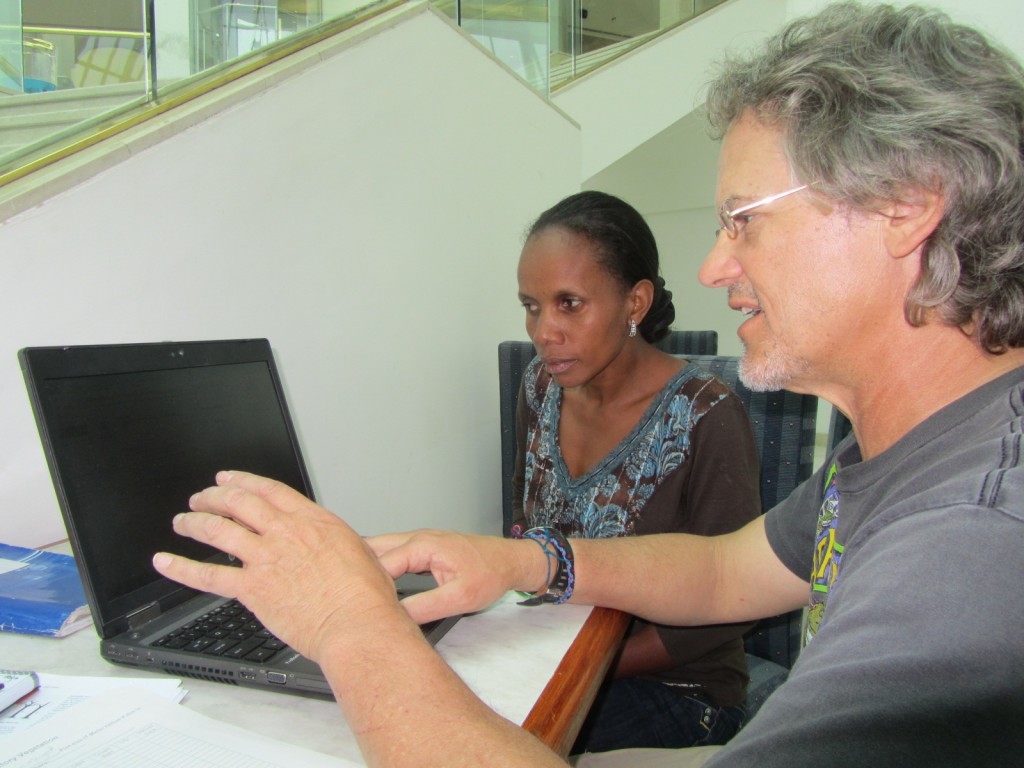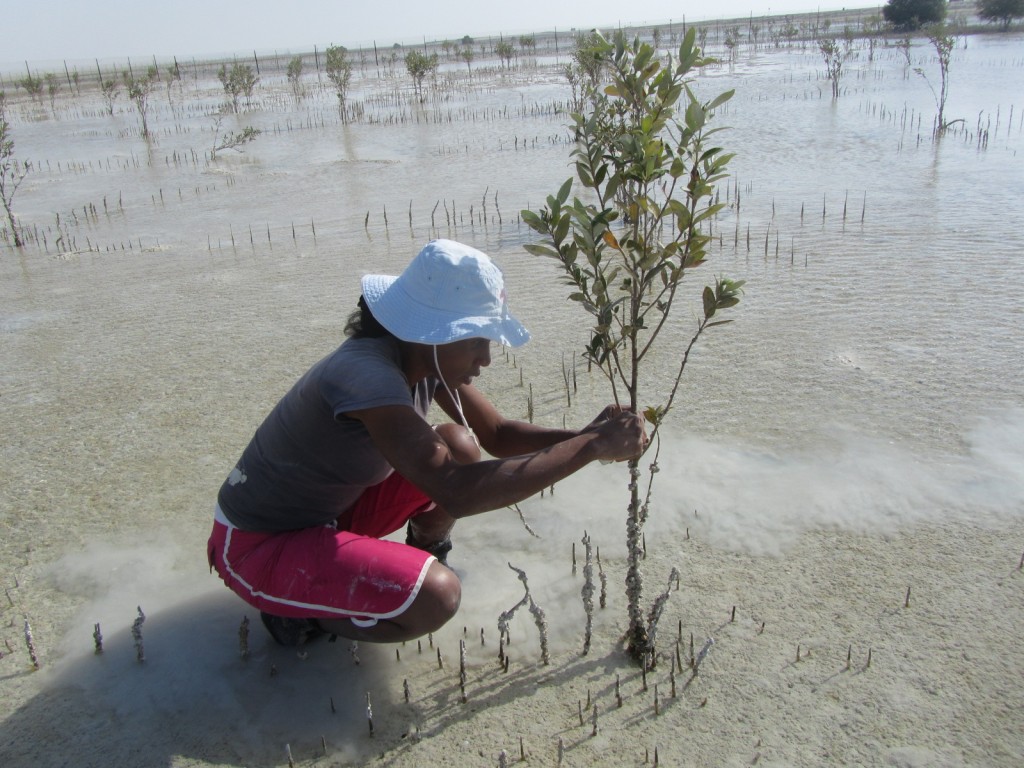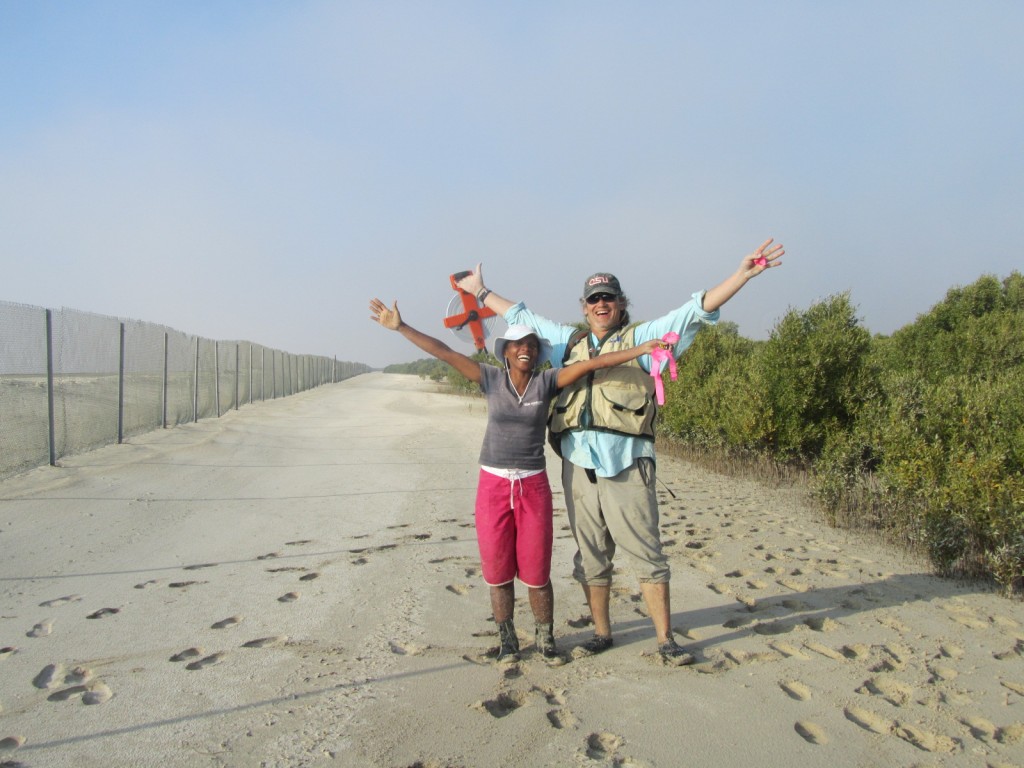by Lalao Aigrette, Mangrove Field Scientist, Madagascar
I recently visited the United Arab Emirates to participate in the Abu Dhabi Blue Carbon Demonstration Project (ADBCDP). In Arabic, Abu Dhabi means the father of gazelle (Abu = father of, and Dhabi = gazelle), and my trip to the father of gazelles was my first out of Africa. While there, I had many new experiences, such as visiting the third largest mosque and the tallest building in the world, as well as seeing large algal flats and sabkah habitats.
The ADBCDP was hosted jointly by GRID-Arendal and the Environment Agency Abu Dhabi (EAD) and involved participants from 11 countries. It was a fantastic opportunity for me to meet with wetland ecosystem experts, and in particular, Dr. Boone Kauffman (pictured here with me) from Oregon State University, who led the mangrove fieldwork. We are using the Centre for International Forestry (CIFOR) manual co-written by Boone Kauffman, and I had and took advantage of extensive opportunities to discuss methodological details with him.
Due to the high salinity, only one species of mangrove, Avicennia marina, grows in Abu Dhabi. Also, in comparison to our mangroves in Madagascar, the mud and mosquitos were absent! Over the course of several weeks, we successfully managed to collect all the data required to evaluate the carbon stock of the mangroves. Through this process, I strengthened existing skills and learned many new things; information that I have brought back to Madagascar. In my opinion, participation in this type of hands-on experience by delegates from many countries, led by the co-author of the most widely useful methodology outlining field protocols for measuring, monitoring and reporting mangrove structure, biomass and carbon stocks, is the most effective way to work towards methodological harmonization.
This is the second hands-on training experience I have participated in outside of Madagascar, the first in Gazy Bay, Mombasa, Kenya in June 2011, organised jointly by Earthwatch and Kenya Marine and Fisheries Research Institute (KMFRI).
Globally, very few studies reporting above- and below-ground mangrove carbon stocks exist. Building on our work (began in 2011) and incorporating the lessons learned from my experience participating in the ADBCDP, we are well positioned to move forward with our important work in Madagascar, working towards reporting the first comprehensive overview of mangrove carbon stocks which in turn will work towards helping safeguard the ecological goods and services critical to increasingly poor and vulnerable Malagasy coastal communities, while also safeguarding critical biodiversity.
I would like to thank GRID-Arendal and EAD for organizing the ADBCDP and for providing us with this great opportunity. Thanks are also given to all of our colleagues with whom we were able to learn so much from, but also share our own experiences with.




